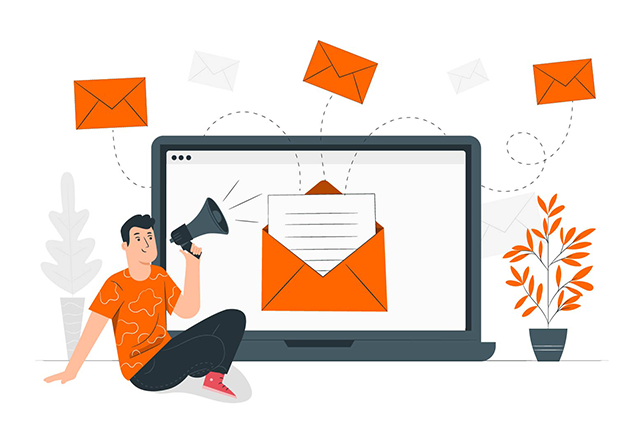Customer Relationship Management (CRM)
-
Home
-
Customer Relationship Management (CRM)

Customer Relationship Management (CRM)
A Customer Relationship Management (CRM) System is a powerful software application designed to help businesses manage and analyze customer interactions and data throughout the customer lifecycle. Its core purpose is to improve business relationships with customers, assist in customer retention, and drive sales growth
A CRM system compiles customer data from a range of different communication channels—including a company's website, telephone, email, live chat, social media, and marketing materials—and organizes it into a single, comprehensive view.
The Core Purpose of a CRM System
At its heart, a CRM system aims to achieve several critical objectives:
Centralize Customer Data: Create a single, unified database of all customer information, accessible to relevant departments.
Improve Customer Service: Provide a holistic view of each customer's history, enabling more personalized and efficient support.
Streamline Sales Processes: Automate and manage the sales pipeline from lead generation to deal closure, increasing efficiency and conversion rates.
Enhance Marketing Campaigns: Facilitate targeted marketing efforts based on customer segmentation and behavior, leading to higher engagement and ROI.
Foster Customer Loyalty: Build stronger, lasting relationships by understanding customer needs and anticipating their preferences.
Increase Revenue: Drive sales through improved lead management, cross-selling, up-selling, and enhanced customer retention.
By achieving these goals, a CRM system transforms disparate customer interactions into actionable insights, fostering a truly customer-centric business approach.
Key Features of a Robust CRM System
A comprehensive CRM system typically boasts a wide array of features, each contributing to a more efficient and effective customer relationship strategy:
- Contact Management:
- Centralized Database: Store and organize all customer and prospect information (names, contact details, company, industry, communication history, preferences).
- Lead Tracking: Monitor potential customers from initial contact through qualification and conversion.
- Activity Logs: Record every interaction (calls, emails, meetings, social media exchanges) with a customer.
Segmentation: Group customers based on various criteria (e.g., demographics, purchase history, engagement level) for targeted efforts.
- Sales Force Automation (SFA):
- Lead Management: Automate lead capture from various sources, assign leads to sales reps, and track their progress through the sales funnel.
- Opportunity Management: Manage potential deals, track their stages, estimated value, and close probabilities.
- Sales Pipeline Visualization: Provide a clear visual representation of all active deals and their progression.
- Quote and Proposal Generation: Create and send professional quotes and proposals directly from the system.
- Sales Forecasting: Predict future sales based on current pipeline data and historical trends.
Task and Activity Management: Schedule and track sales activities like calls, emails, and follow-ups.
- Marketing Automation:
- Email Marketing: Create, send, and track personalized email campaigns to segmented customer lists.
- Campaign Management: Plan, execute, and measure the effectiveness of various marketing initiatives.
- Lead Nurturing: Automate sequences of communications to educate and qualify leads over time.
- Landing Page and Form Builders: Create web forms to capture lead information directly into the CRM.
- Social Media Integration: Monitor social media mentions, engage with customers, and capture leads from social platforms.
Analytics and ROI Tracking: Measure the performance of marketing campaigns and calculate return on investment.
- Customer Service and Support:
- Case Management: Track, manage, and resolve customer issues or complaints (cases/tickets) efficiently.
- Omnichannel Support: Consolidate interactions from various channels (phone, email, chat, social media) into a single view.
- Knowledge Base Integration: Provide agents with quick access to FAQs, articles, and troubleshooting guides.
- Service Level Agreement (SLA) Management: Ensure that customer issues are resolved within defined service standards.
Customer Self-Service Portals: Allow customers to find answers to their questions, track their cases, and manage their accounts independently.
- Analytics and Reporting:
- Customizable Dashboards: Provide real-time, visual summaries of key performance indicators (KPIs) relevant to sales, marketing, and service.
- Sales Reports: Track sales performance by representative, region, product, or time period.
- Marketing Reports: Measure campaign effectiveness, lead generation, and conversion rates.
- Service Reports: Analyze case resolution times, customer satisfaction, and agent performance.
Customer Segmentation Reports: Gain insights into different customer groups and their value.
- Integration Capabilities:
- ERP (Enterprise Resource Planning): Connect with financial, inventory, and supply chain systems for a unified business view.
- Marketing Automation Platforms: Deeper integration with specialized marketing tools.
- Email and Calendar Sync: Seamlessly integrate with popular email clients (Outlook, Gmail) and calendars.
- E-commerce Platforms: Sync customer and order data from online stores.
- Social Media Platforms: Connect for monitoring and engagement.
Call Center Software: Integrate for call logging, routing, and reporting.
- Mobile Accessibility:
Mobile Apps: Allow sales reps, service agents, and managers to access CRM data and perform tasks on the go from smartphones and tablets.
Types of CRM Systems
CRM systems can be categorized based on their primary functions:
Operational CRM: Focuses on automating customer-facing processes (sales, marketing, customer service). Its goal is to generate leads, convert them into customers, and provide support.
Analytical CRM: Focuses on collecting, processing, and interpreting customer data. It uses data mining, pattern recognition, and predictive modeling to understand customer behavior and improve business decisions.
Collaborative CRM: Focuses on facilitating information sharing and collaboration between different departments (sales, marketing, service) within a company, as well as with external stakeholders like partners and suppliers, to enhance customer experience.
Additionally, CRMs are deployed as:
On-Premise CRM: Software installed and maintained on a company's own servers. Offers high customization and control but requires significant IT resources.
Cloud-Based CRM (SaaS CRM): Hosted by a third-party provider and accessed via the internet. Offers lower upfront costs, scalability, and ease of maintenance. This is the most prevalent model today.
Benefits of a Robust CRM System
Implementing a well-chosen CRM system delivers a multitude of advantages:
Improved Customer Satisfaction and Loyalty: By personalizing interactions and providing quick, accurate support, CRM builds stronger customer relationships and fosters loyalty.
Increased Sales and Revenue: Better lead management, efficient sales processes, and targeted marketing lead to higher conversion rates and opportunities for cross-selling and up-selling.
Enhanced Marketing Effectiveness: Segmented customer data enables highly targeted campaigns, leading to better engagement and a higher return on marketing investment (ROI).
Streamlined Business Processes: Automates repetitive tasks, reducing manual effort and human error across sales, marketing, and service departments.
Better Data-Driven Decisions: Centralized data and comprehensive reporting provide actionable insights into customer behavior, sales trends, and operational efficiency.
Improved Internal Collaboration: All relevant departments have access to the same up-to-date customer information, fostering seamless teamwork.
Higher Employee Productivity: Sales reps spend less time on administrative tasks and more time selling; service agents resolve issues faster.
Reduced Costs: Optimizes resource allocation and reduces the need for extensive manual data management.
Scalability: A good CRM system can adapt and grow with the business, accommodating increased customer volume and evolving needs.
Challenges in CRM Implementation
Despite the numerous benefits, CRM implementation is not without its challenges:
- User Adoption: Resistance from employees who are used to old ways of working can hinder successful adoption. Proper training and change management are crucial.
- Data Migration: Transferring existing customer data from disparate sources into the new CRM can be complex, time-consuming, and prone to errors.
- Data Quality: "Garbage in, garbage out." If the initial data is inaccurate or incomplete, the CRM's insights will be flawed.
- Customization Complexity: Over-customizing a CRM can lead to higher costs, longer implementation times, and difficulty with future upgrades.
- Integration Issues: Ensuring seamless data flow between the CRM and other critical business systems (ERP, accounting, marketing automation) can be technically challenging.
- Lack of Clear Strategy: Without clear objectives and a defined strategy for how the CRM will solve business problems, implementation can fail to deliver expected ROI.
- Cost: While cloud CRMs reduce upfront costs, ongoing subscription fees and potential customization/integration costs can be significant.
- Security and Privacy Concerns: Managing sensitive customer data requires robust security measures and adherence to data privacy regulations (GDPR, CCPA).
Implementing a CRM System
Successful CRM implementation requires a strategic approach:
- Define Objectives: Clearly articulate what problems the CRM will solve and what specific business goals it will achieve (e.g., "increase sales by 15%," "reduce customer service response time by 20%").
- Process Analysis: Map out existing sales, marketing, and service processes to identify bottlenecks and areas for improvement with CRM.
- Requirements Gathering: Detail the specific features and integrations needed to meet the defined objectives.
- Vendor Selection: Research and evaluate various CRM vendors based on features, scalability, industry fit, cost, and customer support. Request demos and references.
- Data Preparation and Migration: Cleanse existing customer data and plan for its accurate transfer to the new CRM.
- Configuration and Customization: Configure the CRM to align with your specific workflows and business rules. Limit excessive customization where possible.
- Phased Rollout: Consider a phased implementation (e.g., sales department first, then marketing, then service) to manage complexity and gather feedback.
- Comprehensive Training: Provide thorough training to all end-users, focusing on how the CRM benefits their daily tasks. Ongoing training is also crucial.
- Change Management: Actively manage the transition, communicate benefits, address concerns, and secure buy-in from all stakeholders.
Monitor and Optimize: Continuously monitor CRM usage, analyze performance metrics, gather user feedback, and make iterative improvements to processes and configurations.
In conclusion, a Customer Relationship Management system is a strategic investment that enables businesses to build stronger, more profitable relationships with their customers. By centralizing data, automating processes, and providing actionable insights, CRM empowers organizations to deliver exceptional customer experiences, drive sales, and achieve sustainable growth in an increasingly competitive market.
Share this service:
Providing the Ultimate Experience in Financial Services
+91 98652 81000


